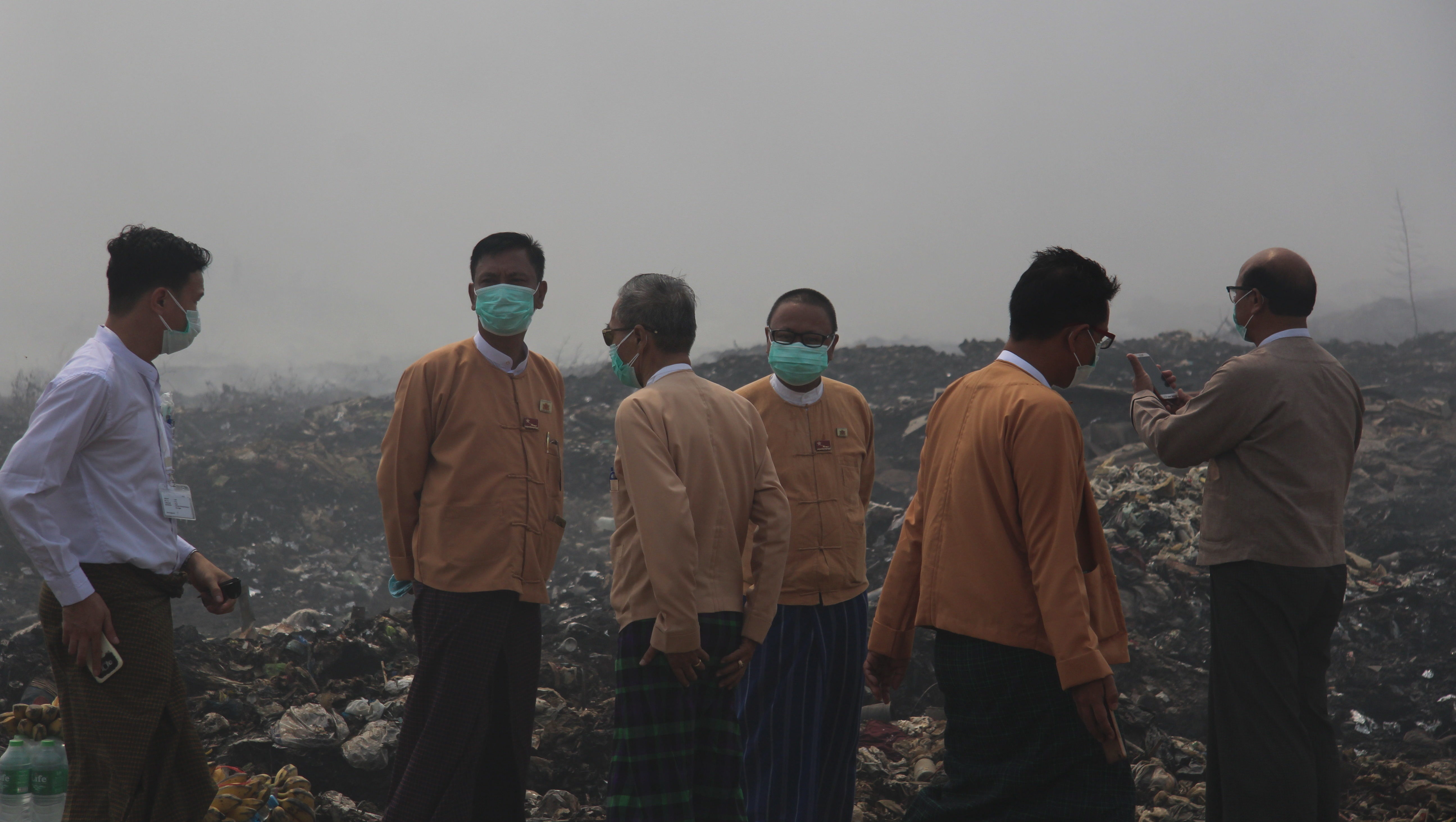From a distance, the fire devouring Yangon’s sprawling Htein Bin landfill is invisible. Unlike the plumes of black smoke billowing from the chimneys of the nearby factories of Hlaingthaya Township, the mixture of steam and smoke emanating from the city’s charred refuse is white, blending seamlessly with the sky.
There are no flames and no signs of destruction. But once inside the dump, a flurry of activity comes into view. Firefighters and soldiers spray streams of water from fat, leaking hoses at the piles of hot waste as masked volunteers scurry in and out of the noxious cloud, supplying the sweating men with snacks and drinks from donation points set up along the periphery.
Since it began on April 20, the great garbage fire has been the ultimate stroke of misfortune unleashed by the people of Yangon upon one of its poorest townships. Dozens of Hlaingthaya residents have been hospitalized after breathing in the poisonous air. Fortunately, the smoldering disaster has aroused the spirit of responsibility among people across the city. Clinics have been providing free care, and donations large and small have streamed in from companies, monasteries, and groups of neighbors who want to play some role in fighting the blaze.
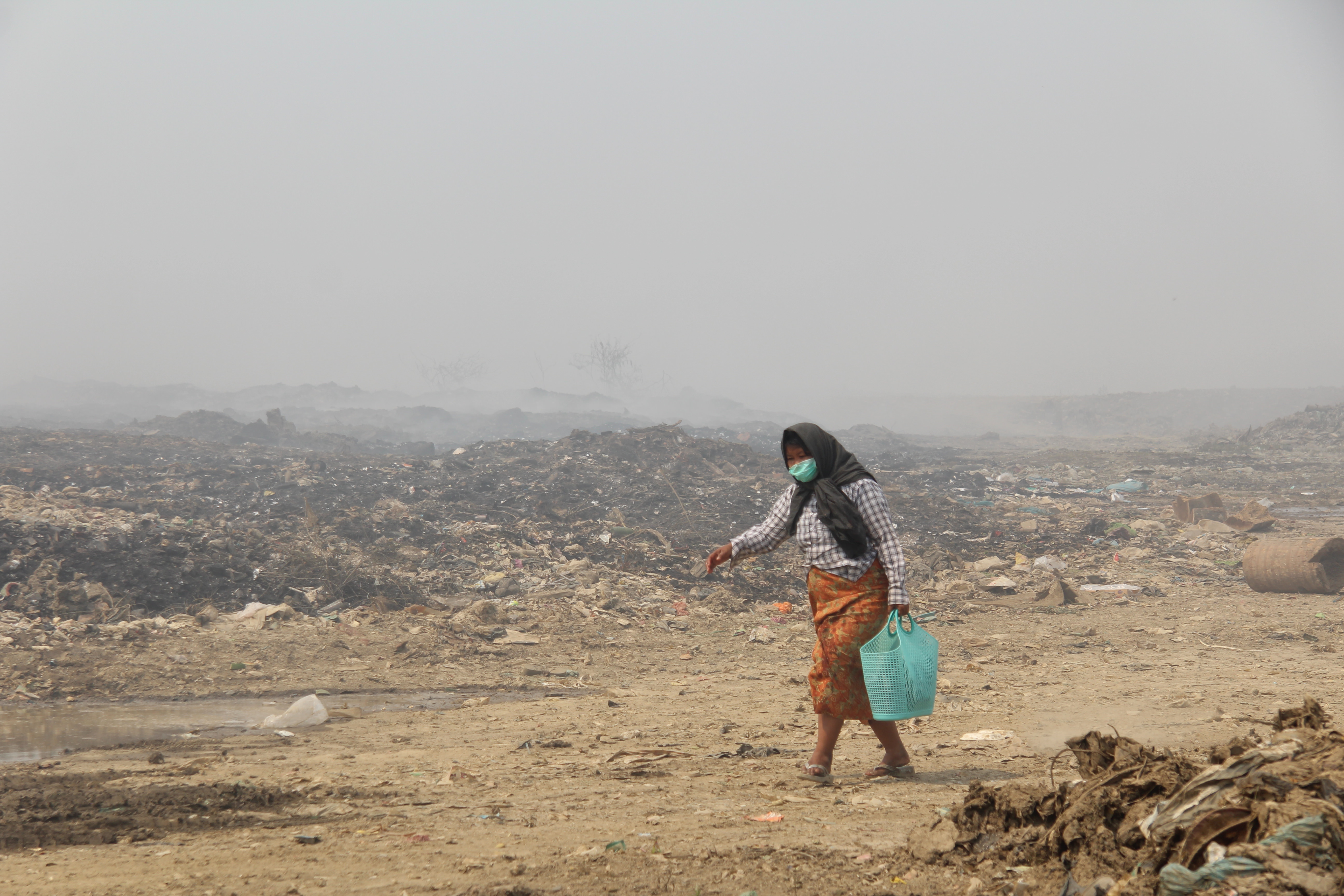
None of these good intentions, however, will help put out the fire. In fact, misunderstandings about the fire’s causes and the lack of any long-term effort to properly manage the city’s waste are putting everyone involved in the firefighting effort in danger of further fueling it.
Kyaw Min, an NLD lawmaker representing Kamayut Township, is a retired, third-generation firefighter who has trained many of the firefighters at Htein Bin. Standing at the edge of the burning mess on the fire’s fifth day, he offered his professional assessment.
“There are many ways a fire can start, but this is what we call a spontaneous reaction,” he told Coconuts Yangon. “This fire is taking place deep underneath the ground. We don’t really know anything about what is happening underground. It’s dangerous to try and look. Our strategy right now is to try and contain the fire and prevent it from spreading.”
To that end, the firefighters under Kyaw Min’s watch are fighting the fire exclusively with water, which is pumped from nearby waterways.
“For now, other than this technique, there is nothing else we can do,” he said. “If we spray foam or treated water, no one can guarantee that these materials will actually reach the fire. Using those methods wouldn’t be effective.”
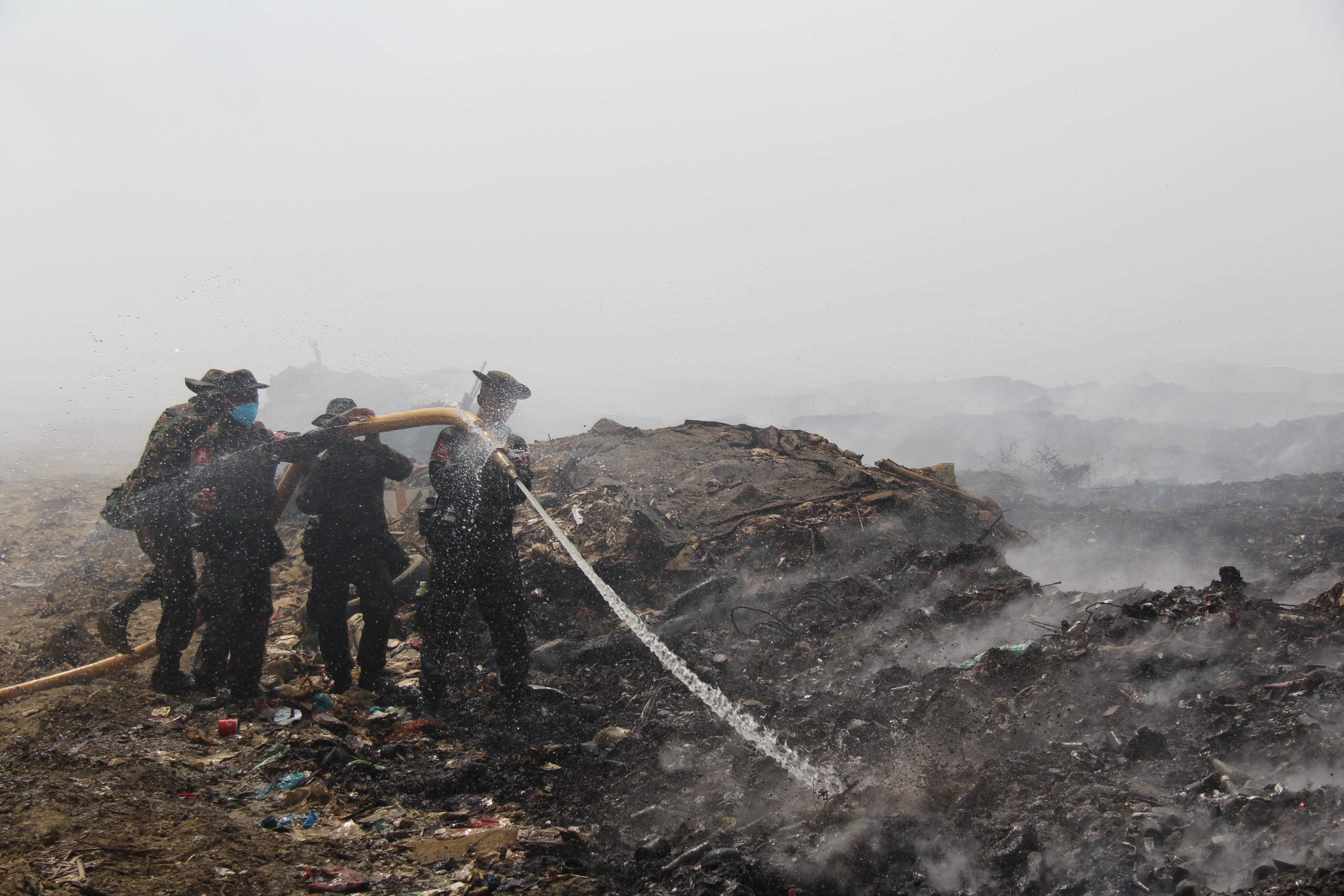
While technically correct, Kyaw Min’s explanation omits the basic science behind the spontaneous reactions that cause landfill fires around the world, as well as the simple interventions they necessitate.
“There is – pardon my French – a fuckload of organic material going to this landfill,” said Julius de Jong, a longtime Yangon resident and managing director of Orgaworld Asia, a company that builds and manages treatment plants for organic waste. He explained that organic material is the primary cause of landfill fires in the developing world. When the material decomposes, it generates heat, and if the heat cannot dissipate faster than it is produced, it can start a fire.
In many developed countries, organic material is sorted out, hardly ever entering a landfill. Often, it is composted and repurposed as fuel or fertilizer. The Yangon City Development Committee (YCDC) nearly adopted these practices when it considered outsourcing the city’s waste collection to a private Myanmar-Australian joint venture. Ostensibly, this would have stemmed the flow of organic waste into the landfill. However, the plan was scrapped in 2015, with YCDC claiming that just 19.8 percent of the city’s residents supported the plan, which would have raised waste collection fees by around K33 (US$0.02) per household, per day. Absent the upgrade, a steady stream of unsorted organic and plastic waste has continued to flow into Htein Bin ever since.
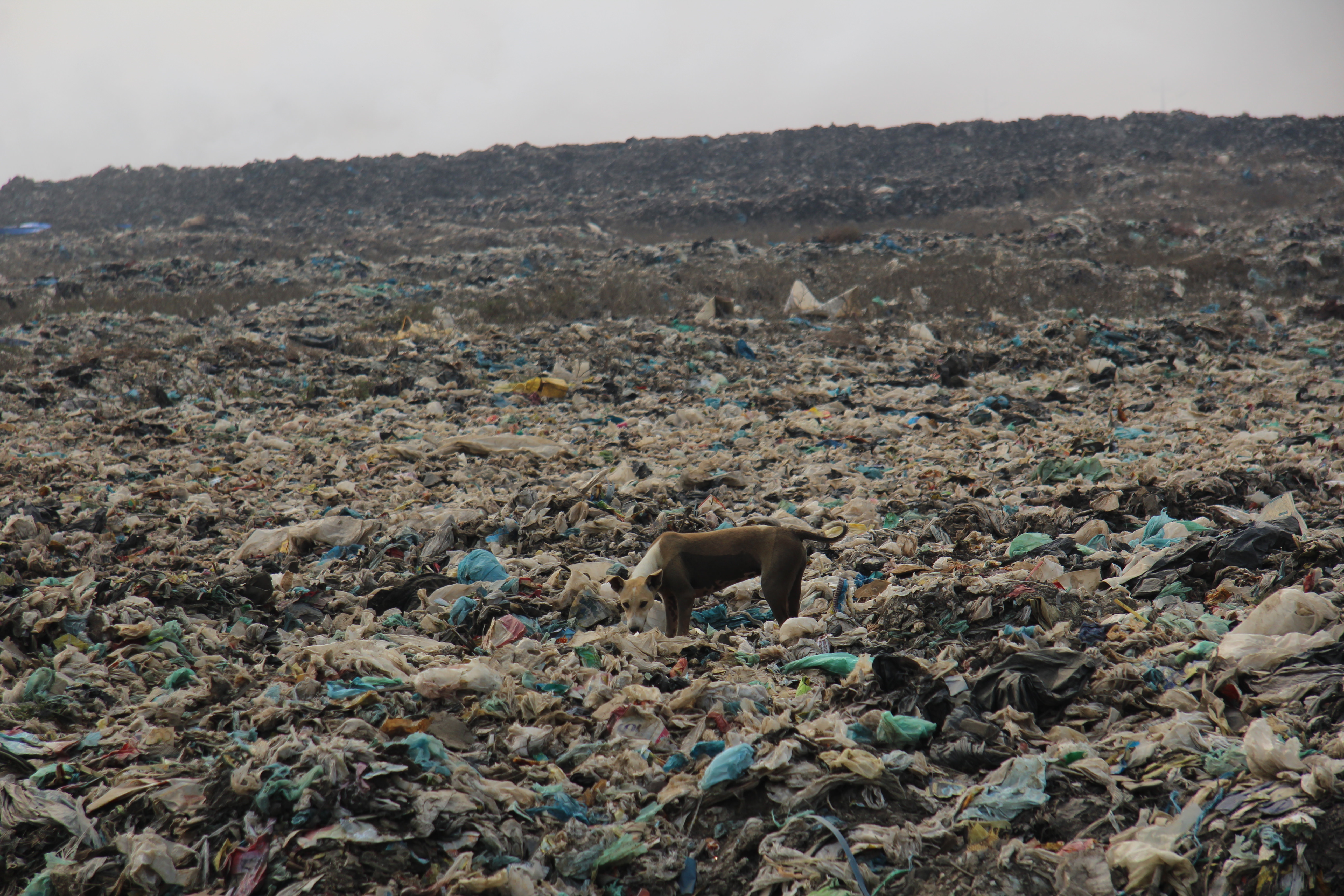
Htein Bin is particularly prone to combustion from biological decomposition because it is not a “controlled” or “sanitized” landfill, meaning there is no layer of concrete or metal separating the waste from the ecosystem, allowing organic leakage to seep deep into the ground.
With organic material making up an estimated 90 percent of Yangon’s 2,000 tons of daily waste, the 17-year-old, 300-acre landfill was a ticking time bomb from the start. Plastics, textiles, and machinery are now being consumed by the underground blaze, releasing harmful dioxins into the city’s air.
Adding water to this mix is no solution, de Jong said.
“If you [already] have organic material that has built up over years and years, what you want to do is prevent water from entering the landfill because that stimulates [decomposition],” he said. “What you want to do is dry out the landfill and cap it with sand or soil.”
Plus, once a fire of this sort and size starts, adding water only feeds it with oxygen. Sand, again, is the best solution.
When asked why no sand was being used to fight the fire in Htein Bin, Kyaw Min, the retired firefighter, said: “We aren’t using sand because we can’t guarantee that it will reach the fire because of how deep it is. If it doesn’t reach the fire, we might think that it did because it might stop the smoke, while the fire spreads to another place.”
De Jong responded: “Simply capping the landfill with one to 1.5 meters of dirt or soil will actually extinguish the fire, as it will take away the oxygen. Without oxygen, no fire. Simple physics.”
He added that using sand or soil has fewer harmful effects on the environment than foam or even bio-foam, which the Yangon Region government announced today it would buy from Thailand to use in Htein Bin.
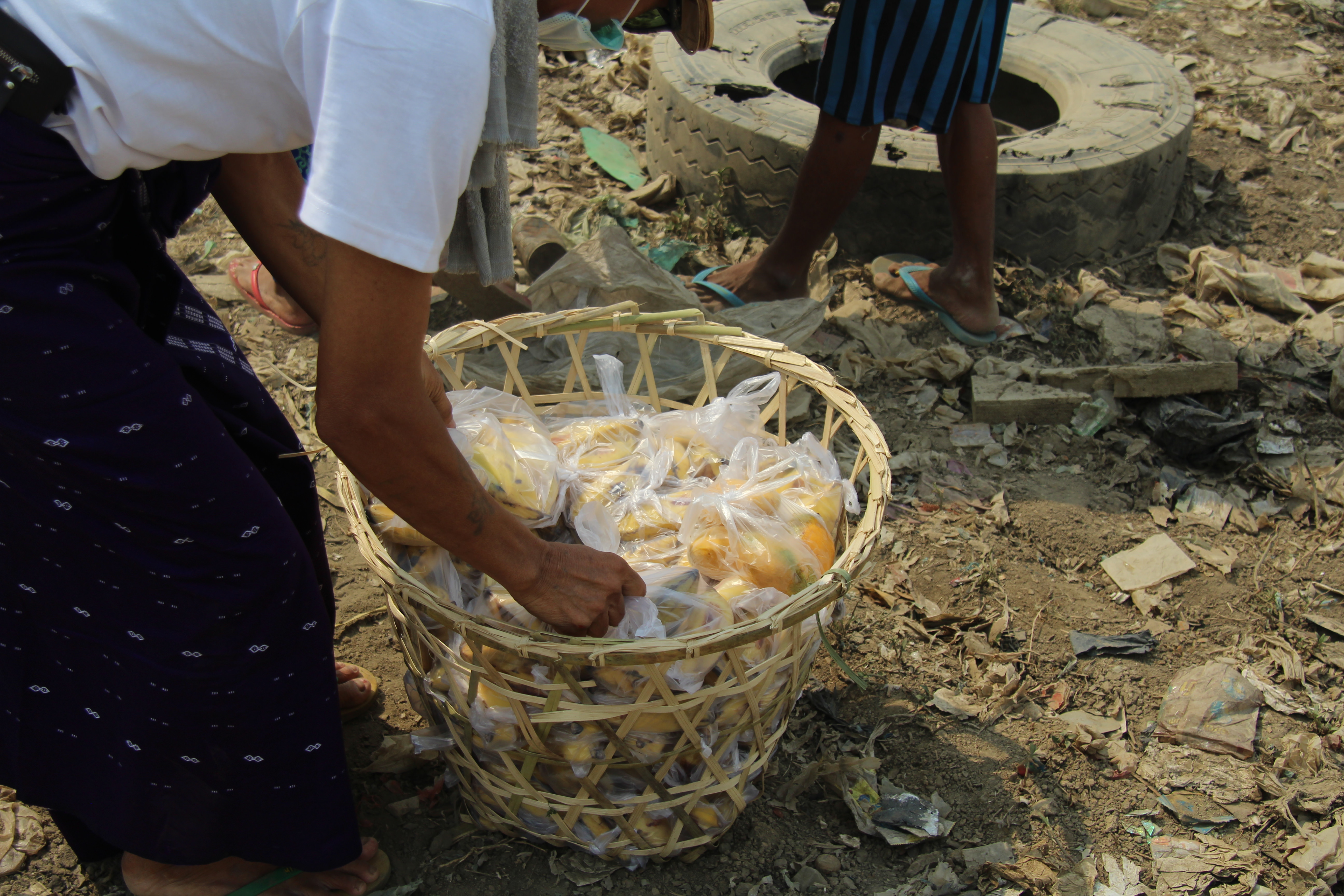
As the firefighters continue to spray water at the heap of contaminated earth, further stimulating its combustion, the public, with its burning desire to help, is left dangerously short on facts. Much of the money donated to the effort is spent on food and drinks, which are ultimately just more fuel for the fire. One group of volunteers came with hundreds of unpeeled bananas wrapped in individual plastic packages.
“We are giving them encouragement,” said Than Naing, a volunteer who lives in the area. “People can’t possibly know how they can help. It’s not like it’s a neighbor’s house is on fire. It’s huge.”
Hla Thein, a member of the Yangon Region parliament and member of its Social Welfare Committee, explained: “This is just something Myanmar people do. As soon as they hear about a natural disaster, they spring into action. People do what they can.”
When asked what his committee is doing to help the effort, the MP said: “We held a meeting this morning about how we can best carry out our responsibility and help the frightened people of Yangon. We’ve decided that we are going to have another meeting about this the day after tomorrow.”
Today, a 61-year-old woman living near the landfill died after receiving treatment for difficulty of breathing. There have been unconfirmed reports of several other deaths.
Meanwhile, the conditions that created the fire remain unchanged. Skinny dogs scamper as an unending procession of trucks hauls heaps of unsorted trash from every corner of the city, prudently placing it a few feet away from the smoldering hills, on a soft layer of ash that covers the ground.
Additional reporting by Aye Min Thant. Photos by Jacob Goldberg.
